 W
WJohn the Baptist was a Jewish itinerant preacher in the early 1st century AD. Other titles and names for John include John the Forerunner in Eastern Christianity, John the Immerser in some Baptist Christian traditions, and Prophet Yaḥyā in Islam. He is sometimes alternatively referred to as John the Baptizer.
 W
WThe Aaronic priesthood is the lesser of the two orders of priesthood recognized in the Latter Day Saint movement. The others are the Melchizedek priesthood and the rarely recognized Patriarchal priesthood. Unlike the Melchizedek priesthood, which is modeled after the authority of Jesus and the Twelve Apostles, or the Patriarchal priesthood, which is modeled after the authority of Abraham, the Aaronic priesthood is modeled after the priesthood of Aaron the Levite, the first high priest of the Hebrews, and his descendants. The Aaronic priesthood is thought to be a lesser or preparatory priesthood and an "appendage" of the more powerful Melchizedek priesthood.
 W
WAl-Anbiyaʼ, is the 21st chapter (sūrah) of the Quran with 112 verses (āyāt). Regarding the timing and contextual background of the believed revelation, it is an earlier "Meccan surah", which means it is believed to have been revealed in Mecca, rather than later in Medina. Its principal subject matter is prophets of the past, who also preached the same faith as Muhammad.
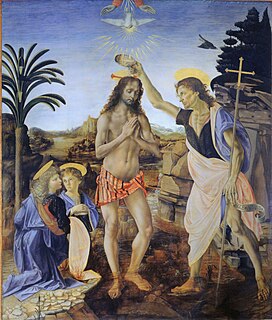 W
WThe baptism of Jesus by John the Baptist is a major event in the life of Jesus which is described in three of the gospels: Matthew, Mark and Luke. It is considered to have taken place at Al-Maghtas, located in Jordan.
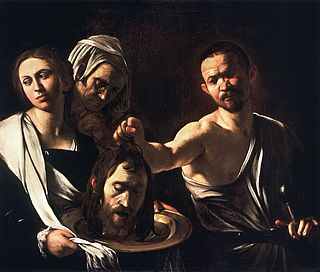 W
WThe Beheading of Saint John the Baptist, also known as the Decollation of Saint John the Baptist or the Beheading of the Forerunner, is a biblical event and holy day observed by various Christian churches that follow liturgical traditions. The day commemorates the martyrdom by beheading of Saint John the Baptist on the orders of Herod Antipas through the vengeful request of his step-daughter Salome and her mother Herodias.
 W
WThe Dance of the Seven Veils is Salome's dance performed before Herod II. It is an elaboration on the biblical story of the execution of John the Baptist, which refers to Salome dancing before the king, but does not give the dance a name.
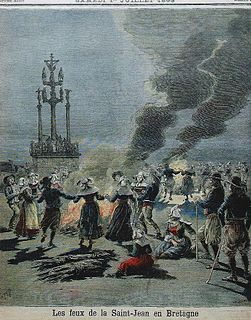 W
WSaint John's Eve, starting at sunset on 23 June, is the eve of celebration before the Feast Day of Saint John the Baptist. The Gospel of Luke states that John was born six months before Jesus; therefore, the feast of John the Baptist was fixed on 24 June, six months before Christmas according to the old Roman calculation. This feast day is one of the very few saints' days which commemorates the anniversary of the birth, rather than the death, of the saint being honored.
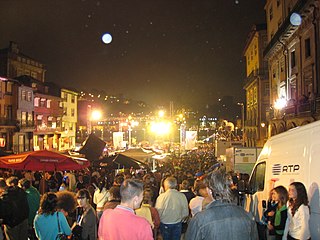 W
WFesta de São João do Porto is a festival during Midsummer, on the night of 23 June, in the city of Porto, in the north of Portugal, as thousands of people come to the city centre and more traditional neighborhoods to pay a tribute to Saint John the Baptist, in a party that mixes sacred and profane traditions.
 W
WFestas Juninas, also known as festas de São João for their part in celebrating the nativity of St. John the Baptist, are the annual Brazilian celebrations adapted from European Midsummer that take place in the southern midwinter. These festivities, which were introduced by the Portuguese during the colonial period (1500–1822), are celebrated during the month of June nationwide. The festival is mainly celebrated on the eves of the Catholic solemnities of Saint Anthony, Saint John the Baptist, and Saint Peter.
 W
WMandaeism, also known as Sabianism, is a monotheistic and Gnostic religion with dualistic cosmology. Its adherents, the Mandaeans, revere Adam, Abel, Seth, Enos, Noah, Shem, Aram, and especially John the Baptist. The Mandaeans speak an Eastern Aramaic language known as Mandaic. The name 'Mandaean' is said to come from the Aramaic manda meaning "knowledge". Within the Middle East, but outside of their community, the Mandaeans are more commonly known as the Arabic: صُبَّة Ṣubba or Sabians. The term Ṣubba is derived from the Aramaic root related to baptism, the neo-Mandaic is Ṣabi. In the Quran, the "Sabians" are mentioned three times alongside Jews and Christians. Occasionally, Mandaeans are called "Christians of Saint John".
 W
WMatthew 3:1 is the first verse of the third chapter of the Gospel of Matthew in the New Testament. This verse takes up the narrative some thirty years after Matthew 2:23 beginning the description of Jesus' ministry. This verse introduces the figure of John the Baptist.
 W
WMatthew 3:2 is the second verse of the third chapter of the Gospel of Matthew in the New Testament. John the Baptist has just been introduced and this verse describes the message that he is preaching. Through John's message, Matthew introduces the "Kingdom of Heaven".
 W
WMatthew 3:3 is the third verse of the third chapter of the Gospel of Matthew in the New Testament. The verse occurs in the section introducing John the Baptist. This verse links John The Baptist to messianic prophecies.
 W
WMatthew 3:4 is the fourth verse of the third chapter of the Gospel of Matthew in the New Testament. The verse occurs in the section introducing John the Baptist with this verse describing his clothing and diet.
 W
WMatthew 3:5 is the fifth verse of the third chapter of the Gospel of Matthew in the New Testament. The verse occurs in the section introducing John the Baptist with this verse describing his popularity in the region.
 W
WMatthew 3:6 is the sixth verse of the third chapter of the Gospel of Matthew in the New Testament. The verse occurs in the section introducing John the Baptist with this verse describing his baptisms.
 W
WMatthew 3:7 is the seventh verse of the third chapter of the Gospel of Matthew in the New Testament. The verse occurs in the section introducing John the Baptist. In this verse John attacks the Pharisees and Sadducees.
 W
WMatthew 3:8 is the eighth verse of the third chapter of the Gospel of Matthew in the New Testament. The verse occurs in where John the Baptist is berating the Pharisees and Sadducees. He has previously called them a brood of vipers and warned them of the wrath to come in this verse he urges them to repent.
 W
WMatthew 3:9 is the ninth verse of the third chapter of the Gospel of Matthew in the New Testament. The verse describes an incident where John the Baptist berates the Pharisees and Sadducees. He has previously called them a brood of vipers and warned them of the wrath to come and has urged them to repent. In this verse he warns that their links to Abraham will not save them.
 W
WMatthew 3:10 is the tenth verse of the third chapter of the Gospel of Matthew in the New Testament. The verse occurs in where John the Baptist is berating the Pharisees and Sadducees. He has previously called them a brood of vipers and warned them of the wrath to come and has urged them to repent. This verse returns to the fruit metaphor of Matthew 3:8 adding a promise of eventual punishment.
 W
WMatthew 3:11 is the eleventh verse of the third chapter of the Gospel of Matthew in the New Testament. The verse occurs in the section relating the preachings of John the Baptist. In this verse he predicts that he will be followed by someone much greater than himself. The main theme of this verse is that John will soon be supplanted by a much greater figure and that John's water baptism is just a preparation for the much greater baptism by fire and spirit that will occur under the second coming of the Christian messiah Jesus, an original Christian concept that, according to Jewish scholars, lacks any fundament in the Hebrew scripture.
 W
WMatthew 4:12 is the twelfth verse of the fourth chapter of the Gospel of Matthew in the New Testament. The temptation scene has just ended, and this verse begins the introduction to the discussion of the Ministry of Jesus, which makes up the bulk of the gospel.
 W
WThe messengers who came from John the Baptist to Jesus are referred to in Matthew 11:2–6 and Luke 7:18–23 in the New Testament.
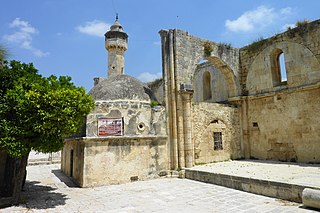 W
WThe Nabi Yahya Mosque is a mosque containing the traditional Tomb of John the Baptist as well as the Tomb of Elisha and the Tomb of Obadiah.
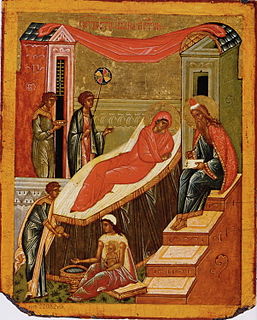 W
WThe Nativity of John the Baptist is a Christian feast day celebrating the birth of John the Baptist. The Nativity of John the Baptist is a high-ranking liturgical feast, kept in the Roman Catholic, Anglican, Eastern Orthodox and Lutheran churches. The sole biblical account of the birth of John the Baptist comes from the Gospel of Luke.
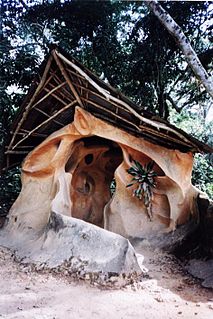 W
WỌṣun, is an Orisha, a spirit, a deity, or a goddess that reflects one of the manifestations of the Yorùbá Supreme Being in the Ifá oral tradition and Yoruba-based religions of West Africa. She is one of the most popular and venerated Orishas. Oshun is an important river deity among the Yorùbá people. She is the goddess of divinity, femininity, fertility, beauty and love. She is connected to destiny and divination.
 W
WThe Parable of the Two Sons is a parable told by Jesus in the New Testament, found in Matthew. It contrasts the tax collectors and prostitutes who accepted the message taught by John the Baptist with the "religious" people who did not.
 W
W"This Is the Record of John" is a verse anthem written by the English composer Orlando Gibbons (1583—1625). It is based on a text from the Gospel of John in the Geneva Bible and is a characteristic Anglican-style composition of its time. "John" refers to John the Baptist. The piece is divided into three sections, each beginning with a verse for solo contratenor followed by a full section, echoing words of the verse. The singers are usually accompanied by organ: a viol consort is another possibility, although it is debatable how frequently viols would have been used in Jacobean services.
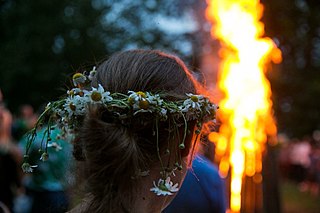 W
WSaint Jonas' Festival, also known as Rasa, Joninės, Kupolė, Midsummer Day or Saint John's Day) is a midsummer folk festival celebrated on 24 June all around Lithuania. While midsummer day is celebrated throughout Europe, many Lithuanians have a particularly lively agenda on this day. The traditions include singing songs and dancing until the sun sets, telling tales, searching to find the magic fern blossom at midnight, jumping over bonfires, greeting the rising midsummer sun and washing the face with a morning dew, young girls float flower wreaths on the water of river or lake.
 W
WSânziană is the Romanian name for gentle fairies who play an important part in local folklore, also used to designate the Galium verum or Cruciata laevipes flowers. Under the plural form Sânziene, the word designates an annual festival in the fairies' honor. Etymologically, the name comes from the Latin Sancta Diana, the Roman goddess of the hunt and moon, also celebrated in Roman Dacia. Diana was known to be the virgin goddess and looked after virgins and women. She was one of the three maiden goddesses, Diana, Minerva and Vesta, who swore never to marry.
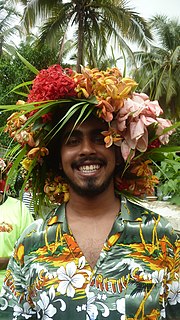 W
WSan Janv or São João is a Catholic festival celebrated in Goa in an unusual manner, with Goan Catholic men leaping into, and swimming in, wells, streams and ponds as a form of tribute to St. John the Baptist. It occurs on June 24 every year.
 W
WSurb Karapet Monastery was an Armenian Apostolic monastery in the historic province of Taron, about 30 km (19 mi) northwest of Mush (Muş), in present-day eastern Turkey.
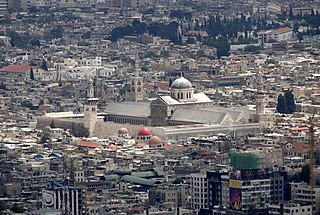 W
WThe Umayyad Mosque, also known as the Great Mosque of Damascus, located in the old city of Damascus, is one of the largest and oldest mosques in the world. The mosque is also important in Islam because of its historical and eschatological reports and events associated with the mosque. The mosque is the fourth holiest site of Islam.
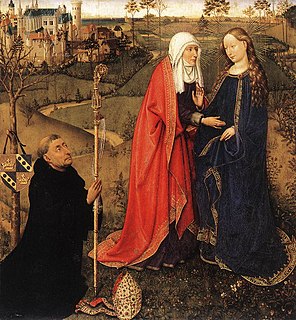 W
WIn Christianity, the Visitation is the visit of Blessed Virgin Mary, who was pregnant with Jesus, to St. Elizabeth, who was pregnant with John the Baptist, as recorded in the Gospel of Luke, Luke 1:39–56.